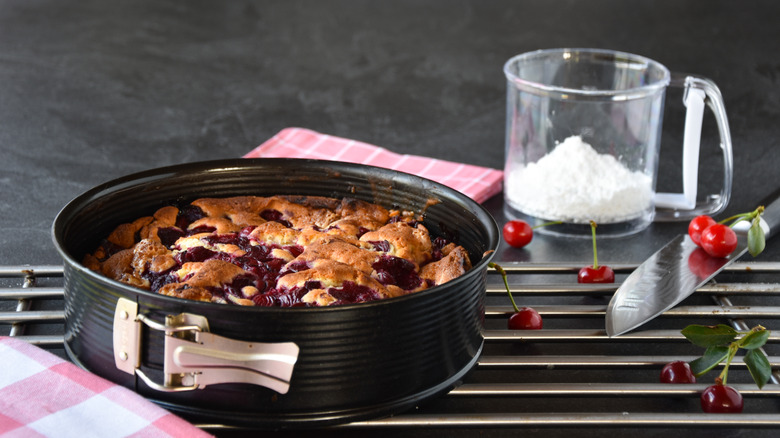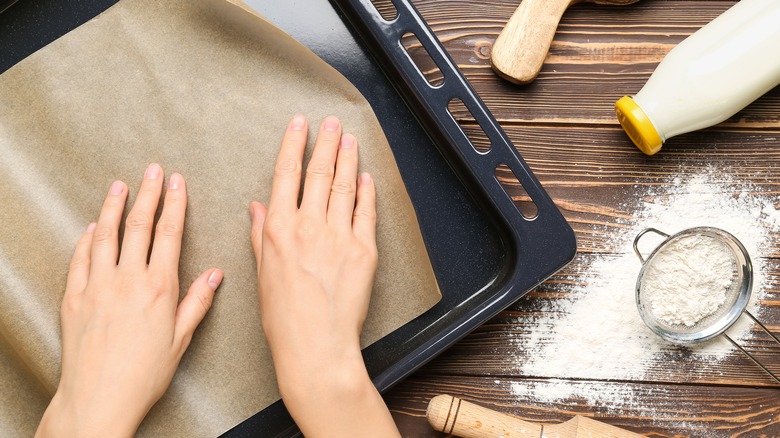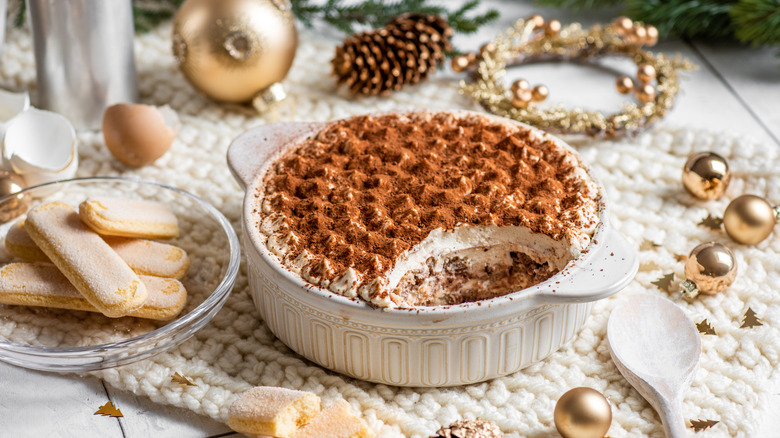What To Use If You Don't Have A Springform Pan
Of the many kitchen tools that you may go back and forth on deciding if you really need them, the springform pan is one of the trickiest. Unless you are a dedicated baker, you may not want or need one. But, there may arise the occasional situation when you gather all your baking ingredients and turn to the recipe page, only to find out that one is required.
True to their name, springform pans spring apart to allow easy removal of cakes and tarts baked inside them. There is a removable band that makes up the sides of the pan that can be widened to separate from the base, leaving your dessert exposed and easy to serve.
These types of pans can be incredibly helpful when working with fragile desserts like pies, ice cream cakes, or cheesecakes, which are particularly prone to cracking. But, there are other tricks and workarounds for getting that cake out of a standard baking pan without damaging it. You're just going to need a lot of parchment paper.
The parchment paper technique
When using a springform pan, you may already be instructed to cover the bottom in parchment paper and grease the sides with oil or butter so your cake doesn't stick. But, if you don't have one, you can still get the same effect with a traditional pan using that same parchment paper and butter.
First, you'll want to cut a circle of parchment paper to fit the bottom of a metal cake pan. (Glass can also work, but will likely increase your baking time.) The easiest way to do this is to fold a square piece of parchment paper several times into a triangle, then cut the edges so the folded parchment paper is the length of the radius of the cake pan; it should then unfold into a perfect circle. Try to get the fit as tight as possible, since bumps in your parchment paper can create wrinkles in your cake.
Then, cut a few long strips of parchment paper and layer them across the bottom of the pan, crossing each one over another, so the edges are sticking up out of the pan. (Make sure to grease the pan first so they stick.) Layer the circle on top of this frame, then add a thick band of parchment paper along the sides of the pan. You're essentially trying to make a little basket that can be lifted up from the pan once your cake is done.
Other techniques for handling delicate cakes
If you're using a square pan, you can also just add two overlapping layers of parchment paper so that the sides and bottom are covered. The top layer can simply be lifted in one piece to remove the cake after baking. Aluminum foil will also work in a pinch, and can be molded to the shape of your pan to recreate the same functionality.
Another thing you could do is bake your cake in a disposable aluminum pie tray, and then cut the sides off when it's ready to serve. This will require a sharp and sturdy pair of scissors, as well as some effort, but it's a great option if you're bringing food to a party and don't want to worry about transporting dirty dishes home.
If practicality is more important to you than a perfectly presented dessert, you could also skip all of these tricks and just serve your dessert out of a standard baking pan. It might be harder to cut, but for softer, more spoonable desserts like cheesecake, this is a viable alternative.



